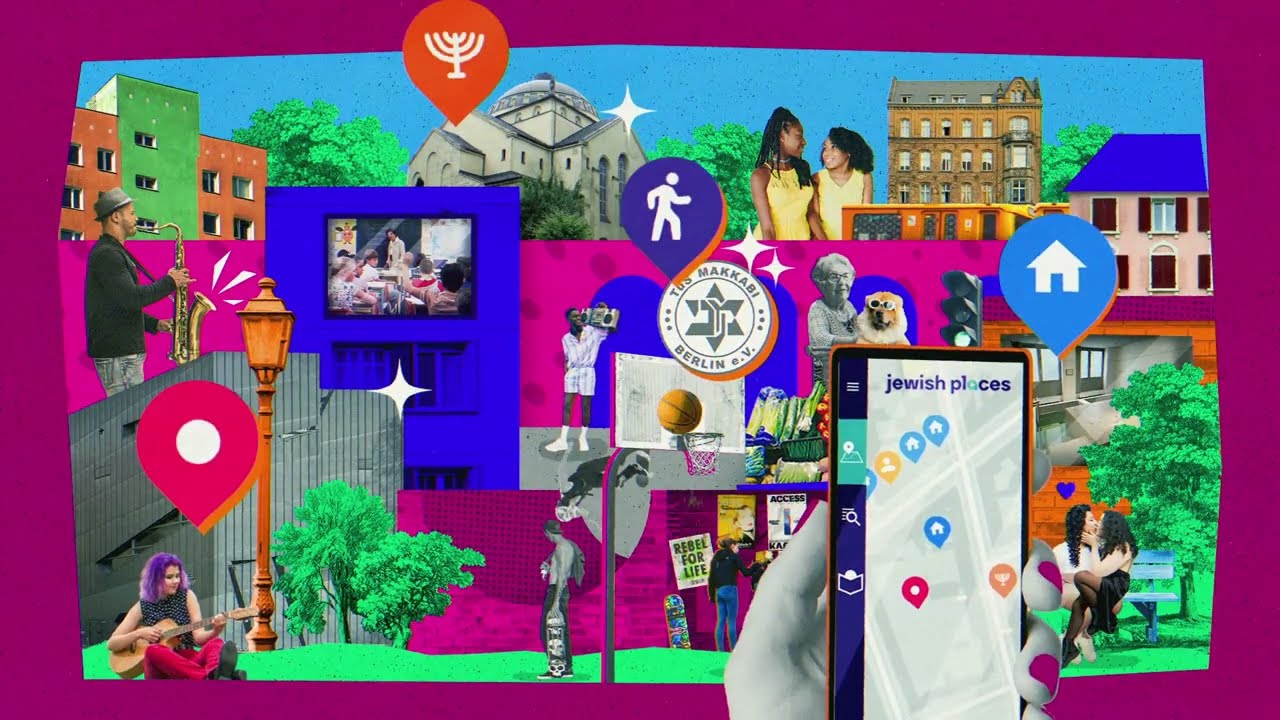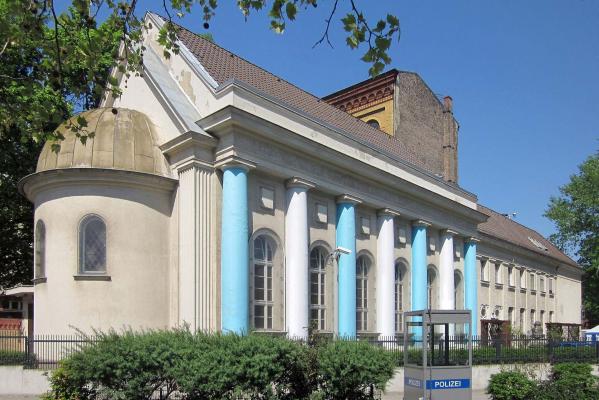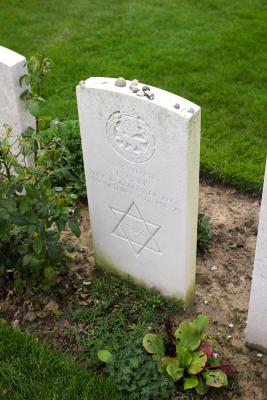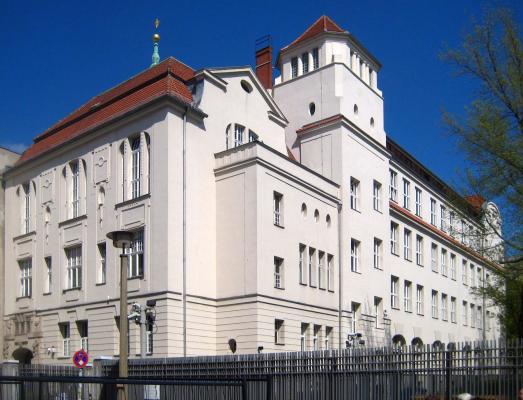Jewish Places
Jewish places – and by extension, Jewish history – are present everywhere in Germany. However, they are not always recognizable at first glance. Through a quiz, students will explore different Jewish places, both religious and secular. In the process, they will learn what these places mean in the daily lives of Jewish people. Students will also be encouraged to reflect on the significance of certain places in their own lives. Additionally, they will be introduced to the “Jewish Places” website, an interactive online map that documents Jewish places and their histories.
Sections45 minGrades 7–8
- A Jewish Place?
- Behind the Facades
- Jewish Places
- The Platform Jewish Places
- Jewish Places in Your Neighborhood


Learning Objectives
Discover
Learn about “Jewish places” and their religious and cultural significance in day-to-day Jewish life.
Understand
Recognize how history connects to places all around us and how Jewish history relates to the history of our society as a whole.
Reflect
Think about places that hold personal significance. Reflect on the concept of self-determination.
Apply
Use the “Jewish Places” citizen science platform to research local and regional Jewish history.
Progress
What Is Your Role As a Teacher?
Even though students will be working on individual screens, an important part of learning happens together in the classroom. As the teacher, your role is to facilitate discussions, guide students as they share their results, and supervise them as they watch and listen to media together. Poll results are displayed anonymously, while text responses show students’ names. The “Tips for Teachers” sections offer guidance on teaching strategies. The icon indicates the type of activity students are engaged in.
Discussion
Students discuss and share personal experiences. This may evoke emotional responses.
A Jewish Place?
What do you think?
Do any places where Jewish people once were count as “Jewish places”? Cast your vote!
Behind the Facades
Take a Closer Look!
What makes a place Jewish? Watch the video now and find out.

Jewish Places
First place
Now, take a look at four Jewish places. Take the quiz and learn more about them.

A Jewish place in Berlin’s Kreuzberg district1
What kind of Jewish place is this?
What do people do at this place?
Listen to how this place sounds.
Shabbat prayer, sung by Cantor Amnon Seelig2
Second Place

A Jewish place in Oranienburg3
What kind of Jewish place do you see here?
What is special about this place?
Look closely at the picture.

Pebbles for remembrance4
Third Place

A Jewish place in Frankfurt5
And what kind of Jewish place is this?
Which of these is the name of a real Jewish sports club?
Listen to what it's like to be a member of this club.
An interview with a member of the club6
Fourth Place

A Jewish place in Berlin7
Last place. What is it?
What rooms are there in this building?
Listen to these two interviews about this place.
Swipe the first audio to the left to get to the second audio.
The Platform Jewish Places
Treasure Hunt on Jewish Places
“Jewish Places” is a Germany-wide platform for local Jewish history. On its digital map, you can discover many different Jewish places and learn more about them. To explore the platform, complete the five searches below. The letters from your answers will combine to form a hidden word.
Complete the searches on Jewish Places to find the hidden word.
Looking for letters
On the homepage, you will see the main categories for places included on the map. How many main categories (colorful circles) are there?
Search for the former Jewish Girls’ School in Berlin. In which street is the former school building located?
Search for the biography of Leo Trepp. In which city was he born?
Search for the Jewish Museum Berlin. What is the name of the museum’s architect?
Under the category “Locations,” you will find the city of Potsdam. The “chronicle” (timeline) lists some information. In 1933, the boycott of Jewish businesses began. What was the name of the Jewish attorney who was arrested by the Nazis?
Were you able to find everything and answer the questions? Put together the six-letter hidden word and type it in the text box.
Jewish Places in Your Neighborhood
Which of the questions interests you?
You’ve now learned about several Jewish places and their significance for Jewish people. You’ve also explored the Jewish Places platform, where you can discover Jewish sites. If you come across a Jewish place that isn’t yet listed, you can add it to the Jewish Places map at any time.
Choose a question.
- What is the Jewish place you know in your area? Describe the place (e.g., its architecture, location in the city, what people do there, your personal experience with it).
- Do you know of a Jewish place that should be added to Jewish Places? If so, what information would you post about it?
- Why is it so important for people to be able to shape places for themselves? What places do you play a role in shaping?
Provide this module to students
Simply share the module with your class using the QR code or link provided.

